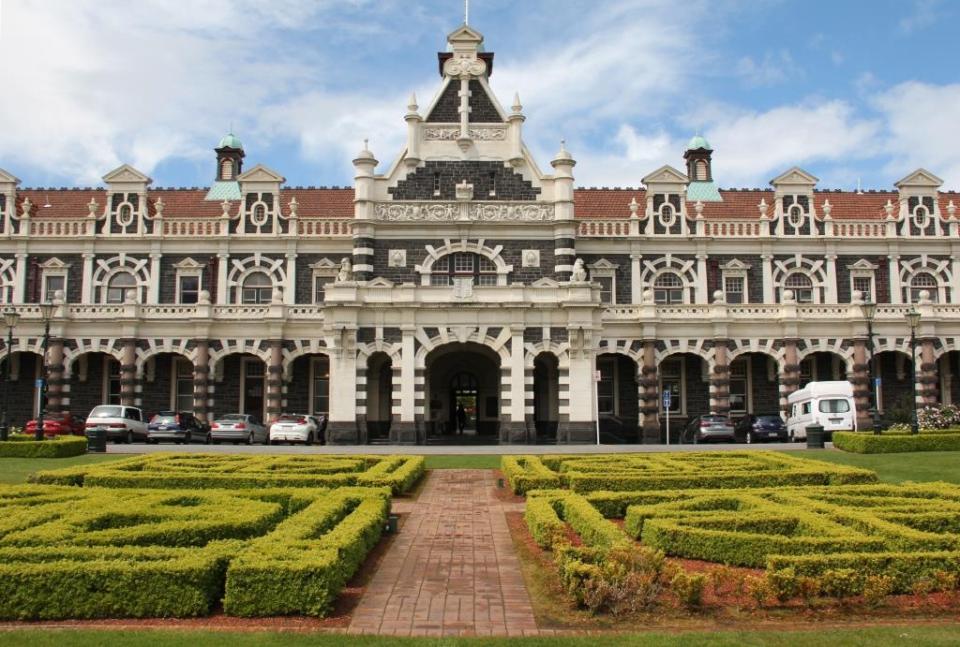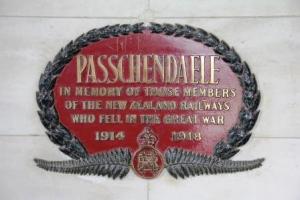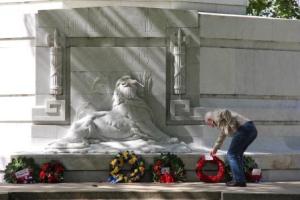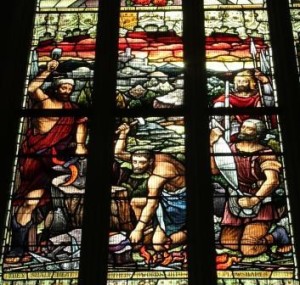If you want to get an ego boost as a historian, then go south – or at least as far as Dunedin. It may be unfair to say that the past becomes important to a community when the great days are over, and the present is more challenging. But, whether for this reason or not, Dunedin really is making the most of its proud 19th century heritage, and can realistically claim to be the new centre of New Zealand history whatever level of history interests you.
This was brought home to me when I spent a few days in the southern capital last month. I had gone there to take part in a conference on war memorials – a conference on war memorials? you ask. Surely you couldn’t get two people to pay money for such an experience elsewhere in the country. Well, there are a few fanatics like myself who are well and truly infected by the war memorial bug and get excessively decided about discovering new stone edifices. A few of such sufferers of the malady came from around the country; but what struck me was the number of locals who were there because they love the physical evidence of history. They turned up in numbers to hear the Australian visiting speaker, Joy Damousi; and they joined us on a walking tour of some of Dunedin’s memorials. We first discovered a memorial on a bridge over Anzac Avenue obviously added surreptiously which read, ‘ This plaque was originally planned to extravagantly praise Dunedin, but now I want to remember the Maori passive resisters, abducted from Parihaka, shipped to Dunedin, held without trial, imprisoned, they were used as slaves to builds the sea walls of this harbour’. Chastened by this honest account of history, we walked along ‘Anzac Avenue’ and saw a plaque in Dunedin’s magnificent railway station to rail employees who had died in the Great War and another which once rode on the Passchendaele train, we looked at William Gummer‘s soaring cenotaph in Queen’s Gardens, and we visited First Church where we were shown a fine stained glass window to the fallen. It was a pity we did not have time to make a call at the Southern Oval where Carlo Bergamini’s handsome memorial to those who died in South Africa could be seen. On a similar tour in May I had led a whole bus-load of Dunedin war memorial fanatics to see it. Where else would you fill a bus for such a purpose?
Between sessions at the conference I went wandering and simply could not escape history at every turn. I visited the huge newly-refashioned Toitū, Otago Settlers Museum, where the history of Otago is told with superb objects. I spent hours in their exhibition about Dunedin’s Great War – hours, not only because the exhibition is stacked with revealing objects and stories, but also because I wanted to catch as much as possible of the video about the Otago boys at war. It lasts about five hours in itself and tells the story of the Otago Battalion in extraordinary detail. What other community would dare undertake such a lavish production?
Then I wandered up to the northern cemetery. Entering the Sexton’s cottage I met the impressive Ann Barsby, who is the moving force behind the Southern Heritage Trust. Set up in 2002 the trust advocates for the conservation of heritage buildings and places. It also organises a host of events such as a recent Halloween party at the Gasworks Museum. The trust has established a website about the northern cemetery and published a series of guides to the cemetery. I took the opportunity to pick up one of these guides on the ‘Gentlemen of Fortune’ trail. This led me with fascinating biographical information past the graves of such Dunedin entrepreneurs as William Larnach (merchant baron of ‘castle’ fame), Charles Begg (seller of musical instruments), the Burt brothers (of plumbing supplies) and so on.
Dunedin’s claim to heritage capital does not rest only on these thriving examples of public history. It is also, unquestionably, now the powerhouse of academic history. The university is home to about a dozen outstanding historians of New Zealand. They include:
- Tony Ballantyne, probably the country’s most original historian, who positions New Zealand within context of international imperial forces
- leading writers on gender and family history (such as Chris Brickell, Angela Wanhalla, Annabel Cooper, Barbara Brookes)
- two of the few historians who take religion seriously (John Stenhouse and Ali Clark)
- migration historians (especially Angela McCarthy)
- historians of Māori (Michael Stevens and Lachy Paterson)
- and behind the scenes two long-established leaders in New Zealand history, Erik Olssen and Tom Brooking, the first just completing his long-awaited history of New Zealand, and the second basking in the achievement of his biography of Richard Seddon.
Out of this clustering of talent has emerged significant institutions. They include the hugely impressive Caversham project which spawned a series of significant publications about urban society in the late 19th and early 20th centuries; and a Centre for Research on Colonial Culture which has sponsored a series of imaginative and pioneering conferences. The academic output is also supported by a lively university press.
Perhaps the best expression of the reality that New Zealand history has moved south is the fact that editorship of the New Zealand Journal of History has now migrated from Auckland to Dunedin.
So whether you get your kicks from enjoying built heritage or old objects, or whether what thrills you is the cut-and-thrust of historiographical debate, then Dunedin in 2015 is the place to be.




Pingback: NZHistoryJock visits Dunedin | Southern Heritage Trust